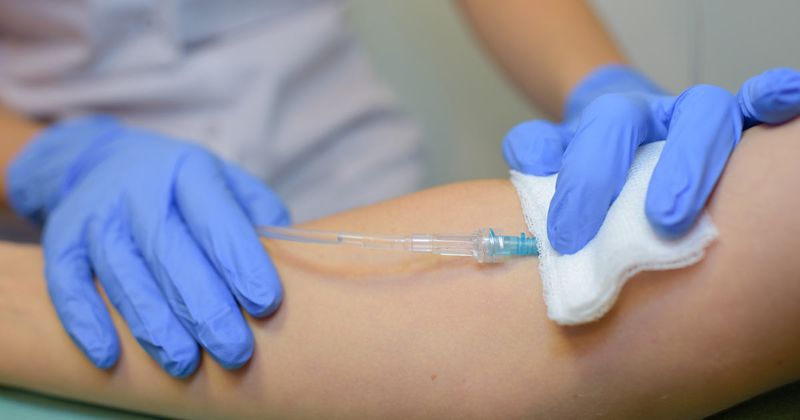IV nipocalimab reduces disease expression in generalized myasthenia gravis
Key takeaways:
- Nipocalimab led to significant improvements in disease-specific metrics from baseline among patients with myasthenia gravis.
- Treatment was well-tolerated, with no serious adverse events.
Treatment with IV nipocalimab was safe and led to significant reductions in disease expression at 24 weeks in adolescents with generalized myasthenia gravis, according to data presented at AANEM.
“Patients around the world need additional treatment options to help address the serious health consequences of myasthenia gravis,” Sindhu Ramchandren, MD, MS, executive medical director of neuroscience at Johnson & Johnson Innovative Medicine, told Healio.

Earlier this year, Johnson & Johnson submitted an application to the FDA and European Medicines Agency for the approval of nipocalimab as a treatment for generalized myasthenia gravis. This week, the drug was granted breakthrough designation by the FDA for Sjogren’s disease.
“About 10% of new cases of myasthenia gravis are diagnosed in adolescents, and the severity of disease in pediatric patients is heightened, with 43% having experienced over five hospitalizations in their lifetime,” Ramchandren said.
Ramchandren and colleagues evaluated the safety, efficacy, pharmacodynamics and pharmacokinetics of the investigational monoclonal antibody in a small cohort of young patients who had previously failed to respond to standard-of-care (SOC) treatment, according to a press release.
The vibrance-mg clinical trial is an ongoing, 24-week, phase 2/3 study that includes seven adolescents (mean age, 14.1 years; 85.7% girls; 57.1% Asian) diagnosed with generalized myasthenia gravis who were seropositive for anti-acetylcholine receptor autoantibodies or muscle-specific kinase autoantibodies.
After a brief initial screening period, enrollees were administered a loading dose of 30 mg/kg IV nipocalimab at baseline plus SOC treatment, followed by 15 mg/kg IV nipocalimab plus SOC every 2 weeks from week 2 to week 22.
A planned long-term extension of the study will feature 15 mg/kg IV nipocalimab every 2 weeks plus SOC or 30 mg/kg IV administration plus SOC every 4 weeks ahead of a safety follow-up interval.
The study’s primary endpoints are safety and tolerability as well as change in serum IgG. Secondary endpoints included change from baseline in the Myasthenia Gravis Activities of Daily Living (MG-ADL) score as well as Quantitative Myasthenia Gravis (QMG) score.
According to the press release, the mean percentage change in serum IgG from baseline to week 24 in five participants who received at least one dose of the study drug and at least one post-infusion sample was 68.98% (95% CI, -78.4 to -59.6), with the most significant drop off occurring between baseline and week 2 of treatment initiation, remaining consistent thereafter.
Data additionally showed a mean reduction in MG-ADL score of 2.4 from baseline to week 24, with the most precipitous drop from baseline to week 4, as well as a mean reduction of 3.8 in mean QMG score from baseline to week 24 featuring a significant drop from baseline to week 4 maintained through week 24.
Nipocalimab was generally well-tolerated, with no reported severe adverse events or adverse events that led to treatment discontinuation during an average 18.37 weeks of follow up, the release said.
“The open-label phase 2/3 results in adolescents, which are consistent with findings from the pivotal study of nipocalimab in adults with [generalized myasthenia gravis] underscore the potential of the investigational therapy as a treatment option,” Ramchandren said.
Reference:
Nipocalimab demonstrates sustained disease control in adolescents living with generalized myasthenia gravis in Phase 2/3 study. https://www.jnj.com/media-center/press-releases/nipocalimab-demonstrates-sustained-disease-control-in-adolescents-living-with-generalized-myasthenia-gravis-in-phase-2-3-study. Published Oct. 15, 2024. Accessed Nov. 11, 2024.
